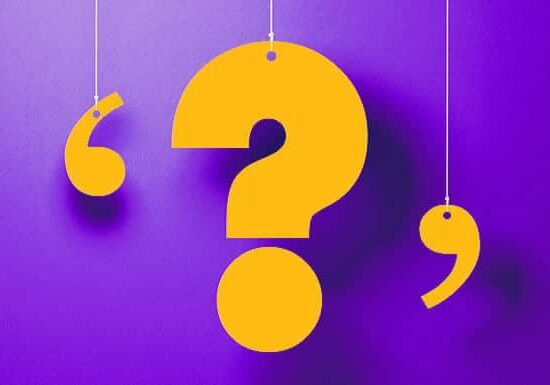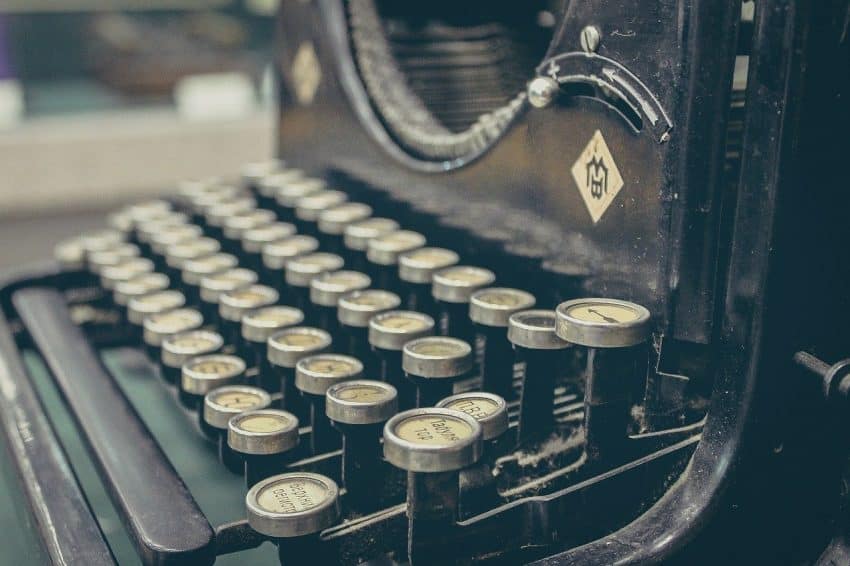What Are The 14 Punctuation Marks You Need To Know?
Updated: July 10, 2024

Punctuation has a way of adding emphasis and cadence to our written sentences. Still, many people, from native English speakers to people learning English as a foreign language, aren’t always sure when and where to use punctuation marks.
If you find punctuation confusing, rest assured you’re not the only one. Plenty of people, even native English speakers, have trouble when it comes to using the right punctuation marks. The good news is that the 14 different punctuation marks aren’t as confusing as you’d think when you break them all down. If you want to master your writing, whether it’s for an essay or even a bestselling novel, it’s important to understand how to use each punctuation mark.
So, what are the 14 punctuation marks and how should you use them? Let’s dive into it.

English Punctuation Guide
There are 14 punctuation marks that are used in the English language. They are: the period, question mark, exclamation point, comma, colon, semicolon, dash, hyphen, brackets, braces, parentheses, apostrophe, quotation mark, and ellipsis.
If you want to make your writing easier to read and generally look more professional, you should know what each one is and how to use them.
Punctuation conveys meaning, clarity, and tone in writing. Common mistakes include using commas and apostrophes incorrectly, among so many others. To enhance your punctuation skills, practice by reading well-punctuated texts and using grammar tools that can help guide you.
Don’t worry, we’ll break down each punctuation mark and show you exactly how and when to use it.
The 14 Punctuation Marks with Examples
We can break down the punctuation marks into five categories, as follows:
- Sentence endings: period, question mark, exclamation point
- Comma, colon, and semicolon
- Dash and hyphen
- Brackets, braces, and parentheses
- Apostrophe, quotation marks, and ellipsis
Each category serves its own purpose within a sentence or a text. While there are some differences between American and British punctuation styles, here we’ll focus on the main examples instead of breaking down the slight differences. Let’s take a closer look at each punctuation mark and its usages.
Period (.)
This one is probably the most straightforward. Also referred to as a full stop, the period denotes the end of a sentence. A full sentence is considered as one that is complete and declarative.
Here’s an example of a period at the end of a sentence:
- The dog ran under the fence.
Periods are also used in abbreviations, such as in names or titles.
Here are examples of how to use a period in abbreviations:
- Dr. Smith read his patient’s chart.
- Mr. H. Potter opened his front door.
Question Mark (?)
A question mark also ends a sentence, however it ends a sentence that is a direct question. Typically, sentences that are questions begin with what, how, when, where, why, or who.
Here’s how to use a question mark in a sentence:
- How do you like your eggs?
- Why didn’t you like the movie last night?
Generally, a question mark also denotes a shift in tone in a sentence if it’s being read out loud, so this is something to take note of.

Exclamation Point (!)
An exclamation point or exclamation mark is also used at the end of a sentence when that sentence expresses an intense emotion. The expression can be a variety of things, from excitement, disgust, anger, joy, or anything else. Exclamation points are meant to add emphasis to a sentence.
Here’s how to use one in a sentence:
- “Look out behind you!” she yelled.
- I’m so excited to go to the park tomorrow!
Comma (,)
Commas are used to insert a pause into a sentence. The purpose of the pause can be for different reasons, such as to separate ideas, phrases, or even alter the structure of a sentence.
Commas have a few different uses. Commas are used for a direct address, such as:
- Joe, it was nice to see you again.
They’re also used to separate two complete sentences:
- He went to the library, and then he went out for lunch.
Commas can also be used to list items in a sentence:
- She went shopping and bought shoes, a dress, two shirts, and a pair of pants.
Commas are one of the most misused punctuation points, and its misuse often results in a comma splice. A comma splice is when you join two independent clauses with a comma instead of a conjunction. For example:
- It’s almost time for dinner, I’m not hungry.
- Instead of using a comma, the sentence should read:
- It’s almost time for dinner and I’m not hungry.
Oxford commas are often debated within academics and the English language, and using one often comes down to preference. An Oxford comma is when a final comma is placed on the last item of a list. For example:
- He likes to eat fruits, cake, vegetables, and pasta.
Colon (:)
A colon has three primary uses. One way to use it is when introducing something, such as a quote, an example, a series, or an explanation.
She took four classes last semester: history, biology, arts, and economics.
A colon can also be used to link two independent clauses if the second clause clarifies or completes the first one. For example:
- They didn’t have time to waste: it was already late.
- Finally, a colon can also emphasize a subject in a sentence:
- I only hate one vegetable: brussel sprouts.
Semicolon (;)
Similar to a colon, a semicolon links two independent clauses. However, in this case, the clauses are more closely related than when you would use a colon. For example:
I have a meeting tomorrow morning; I can’t go out tonight.
Both clauses are independent enough to be their own sentences, but instead of using a period, it’s possible to use a semicolon to show both clauses are connected.
Another less common use for semicolons is within a list that uses commas. Have a look:
- Last summer we traveled to London, England; Paris, France; Rome, Italy; and Athens, Greece.
Dash (-)
There are two types of dashes that vary in size and use.
En dash: Typically shorter in length, the en dash is used to denote a range, such as between numbers or dates. For example:
- The company was operational from 1990-2000.
- He took the Chicago-New York train last night.
- Em dash: this dash is longer, and is sometimes used instead of other punctuation marks, like commas, colons, or parentheses. Here’s an example:
- Her answer was clear — Yes!
Hyphen (-)
Not to be confused with a dash, a hyphen is used in compound words when two or more words are connected. Here are some examples of hyphenated words:
- Step-by-step
- Mother-in-law
- Ex-boyfriend
Brackets ([ ])
Brackets are used to clarify something or for technical terms or explanations. It can also be used to clarify a subject when quoting another person or text. For example:
- She [Mrs. Smith] agrees that cats are better than dogs.
- Adam said that “[summer] is my favorite time of year.”
Braces ({ })
It’s unlikely you’ll need to use braces very often unless you’re writing a mathematical or technical text. However, it’s still good to know so you don’t accidentally use them instead of brackets or parentheses. Braces are usually used in operations, for example:
- 6{3x+[28+2]}=xy
Parentheses (( ))
Parentheses are used to supply further details or information or as an aside. Parentheses can often be replaced with commas and the sentence would retain its same meaning. Here’s an example:
- Kate (who is Matt’s wife) likes to go for walks.
Apostrophe (‘)
Apostrophes are meant to show that a letter or letters have been omitted and also to indicate the possessive or contractions. It can also be used to pluralize lowercase letters. Here are some examples:
- I’ve been working from home for 6 months and it’s great.
- Rebecca’s dog had surgery yesterday.
- All that’s left to do is dot the i’s and cross the t’s.
Quotation Marks (“)
Quotation marks are used to denote text, speech, or words spoken by someone else. It is also used to indicate dialogue.
- “I don’t like this,” said Mark.
- She told him that she “prefers not to think about that.”
- Single quotation marks (‘ ’), not to be confused with apostrophes, are often used for a quote within a quote.
- Jill told her mother “Jack ran up the hill and he said he was going to ‘fetch a pail of water’ before he fell.”
Ellipsis (…)
An ellipsis is three periods used together to represent an omission of words or letters. They are often used to jump from one sentence or phrase to another while omitting unnecessary or obvious words. It’s also used when quoting someone and unnecessary words are left out.
Here are some examples:
- At midnight, she began to count down: “ten, nine, eight…” and then the ball dropped.
- When Martin Luther King said “I have a dream…” he was talking about civil rights and an end to racism.
Common Mistakes When Using Punctuation Marks
The misplacement of punctuation marks can impact the clarity and readability of your writing. Here are some common mistakes:
- Misplacement of Commas: Incorrect comma placement can alter the meaning of a sentence. For example, “Let’s eat, Grandma!” vs. “Let’s eat Grandma!”.
- Overuse of Exclamation Points: Using too many exclamation points can make writing seem overly emotional or unprofessional. It’s best to use them sparingly.
- Confusion Between Hyphens and Dashes: Hyphens (-) connect words (e.g., well-known), while dashes (– or —) separate phrases or clauses (e.g., He was late – as usual).
- Inconsistent Use of Apostrophes: Apostrophes show possession or form contractions. Misusing them, such as in “its” vs. “it’s,” can change the sentence’s meaning.
- Incorrect Placement of Quotation Marks: Punctuation often goes inside quotation marks in American English (e.g., “She said, ‘Hello.'”). Misplacing them can confuse readers.
- Unnecessary Semicolons: Semicolons link closely related independent clauses. Overusing them can make sentences complex and hard to follow.
Conclusion
Now that you’ve learned more about what are the 14 punctuation marks and you’re able to use them, you’ll be a much stronger overall writer. If you’re a student who needs some extra help with grammar or punctuation, you can always find help through your school.
At University of the People, our student support advisors can offer you help with your writing skills among a number of other things.
FAQs
What are the main punctuation marks in English?
The primary punctuation marks in English are the period, question mark, exclamation point, comma, colon, semicolon, dash, hyphen, brackets, braces, parentheses, apostrophe, quotation mark, and ellipsis.
How do punctuation marks contribute to clarity in writing?
Punctuation marks help convey meaning, clarify sentence structure, and indicate pauses, making writing easier to read and understand.
How can I improve my punctuation skills?
Improve your punctuation skills by reading well-punctuated texts, practicing regularly, using grammar tools, and studying punctuation rules.
Which punctuation marks are used to indicate pauses in speech?
Commas, periods, semicolons, and ellipses are commonly used to indicate pauses in speech.
How do punctuation styles vary across different writing formats?
Punctuation styles can vary between academic, creative, and informal writing, and there are different rules for things like comma placement and contraction use.
What are some examples of punctuation errors to avoid?
Avoid common errors like comma splices, incorrect apostrophe use, overuse of exclamation points, and confusion between hyphens and dashes.
